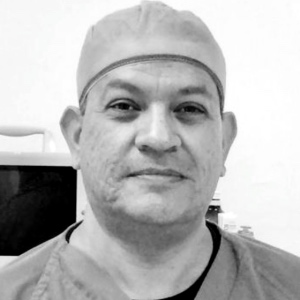5 Useful Breastfeeding Positions


Reviewed and approved by the doctor Nelton Ramos
Learning breastfeeding techniques is very important. You can find a breastfeeding position that keeps you and your baby comfortable while successfully experiencing the beauty of lactation.
One of the fundamental aspects for correct breastfeeding is the proper position of the mother, because this will determine whether or not the baby latches well to the nipple.
It’s important for both of you to be comfortable while breastfeeding, since poor posture can cause two main inconveniences or problems: insufficient milk production (hypogalactia) and nipple irritation.
Both problems can be solved with a good breastfeeding technique, which can be achieved, in large part, with the use of postures or positions for helping your baby latch on.
The Best Postures for Breastfeeding
Don’t worry, having a good posture is simple. We’ll describe five good breastfeeding postures here. There are plenty more, so it’s a good idea to also try some recommended by your pediatrician and choose the one that is best for you.
When you do, try to remember that the most important thing is for both you and your baby to be comfortable in order to breastfeed in a relaxed and successful way.
With the Mother Lying Down

This is the most useful breastfeeding position for nighttime feedings. To put it in practice, it’s necessary for the mother and child to be lying down and for the baby’s face to be in front of the mother’s breast. The baby’s stomach remains against the mother’s body, and she supports her own head with a folded pillow while also supporting the baby’s head.
Traditional Posture
In this position, the mom must be sitting with relaxed shoulders and with her baby resting against her forearm just below her breast.
In this way, the baby’s little head remains supported on the inside of the elbow and can be oriented on the same side on which he or she is feeding. The baby’s belly is supported by the mother’s stomach, and one of his or her arms hugs the mother.
Begin a new life, a new dream, a new desire to do things right.
-Anonymous-
Crossed Cradle Position
This is a variation of the former position in which the mother uses the hand on the same side she is breastfeeding to hold her breast, while the other arm holds the baby along the back and neck.
You’ll need a pillow to hold your baby’s body up to the height of your breast. This position is very easy for giving both nipples without changing the baby’s position, which is a good trick when the baby prefers one side versus another.
Seated Position
The mother sits with a straight spine and relaxed shoulders, and uses a footrest or stool to orient the muscles from the thigh down. The baby looks at the mother and lays belly to belly. Hold a cushion or pillow under the baby to lift him or her to your breast.
I didn’t know that I had a hole in my heart until you came to fill it.
-Anonymous-
Basket or Rugby Hold

With this posture, you hold your baby under the arm on the side that you will be feeding from. Your baby’s body wraps around your waist, and your hand cradles his or her head and neck.
This breastfeeding posture is very useful for those who have had a c-section, have cracked nipples or who are breastfeeding two babies simultaneously.
Tips for Breastfeeding Correctly
Keep in mind that no matter what position you use to breastfeed your baby, the child’s head needs to be aligned with your breast, with the mouth at the same height as the nipple, without allowing the baby to turn, bend or extend the neck.
It’s also good for you to know that if the lips and tongue are healthy, the baby will feed correctly from any position.
The baby’s mouth must be wide open, and the breast needs to go far into the mouth with the nipple near the upper lip. This leaves room for the tongue to be placed between the areola and the lower lip, because the baby feeds by tightening the tongue up and back at the same time.
According to a description from a manual titled “Correct Breastfeeding Technique: The Positions,” edited by staff at the Consejería de Salud del Hospital Virgen de Las Nieves, where most of the tips in this article have originated, “when breastfeeding is correct, normally you will note that the baby ‘works’ the jaw.”
The movement of the jaw is rhythmic and extends to the baby’s ears and temples. You will also notice that the baby’s cheeks do not sink inward, but are rounded. When the baby suckles in this way, the mother does not feel pain, even when the nipples are cracked.
All cited sources were thoroughly reviewed by our team to ensure their quality, reliability, currency, and validity. The bibliography of this article was considered reliable and of academic or scientific accuracy.
- Ciencias Médicas Dr Serafín Ruiz De Zárate Ruiz Santa Clara, U. DE, Clara, V., Eva Josefina Quintero Fleites, D. C., Roque Peña, P., Sara Fe de la Mella Quintero, D., & Gustavo Fong Zurbano, I. (2014). Posiciones correctas y un buen agarre al amamantar: clave del éxito en la lactancia materna Appropriate lactation positions and a good hold: the key to success in breastfeeding. Medicent Electrón.
- Guipuzca, R. (2009). Posturas y posiciones para amamantar. Alba Lactancia Materna.
- Quintero, C., Roque, P., De la Mella, S., & Fong, G. (2014). Posiciones correctas y un buen agarre al amamantar: clave del éxito en la lactancia materna. Medicent Electrón.
This text is provided for informational purposes only and does not replace consultation with a professional. If in doubt, consult your specialist.








